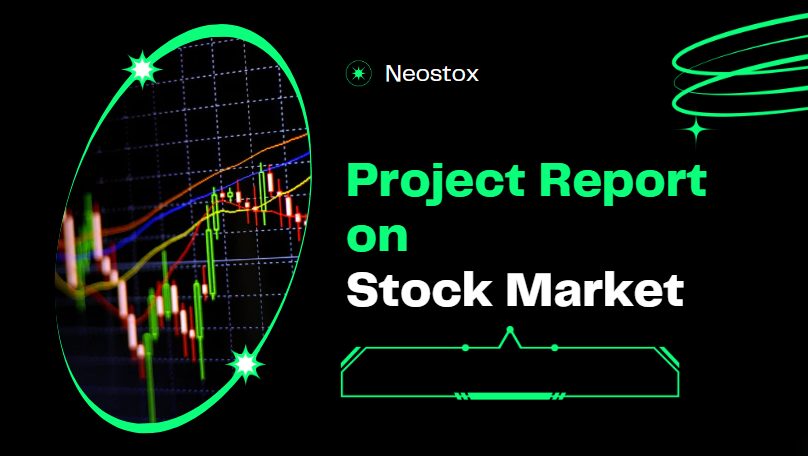Understanding how investors feel about the stock market is very important. This feeling, or perception, influences how people decide to buy, sell, or hold their stocks. It also affects the overall performance of the stock market. In this blog, we will explore Investor Perception Towards Stock Market, the factors influencing it, and how it impacts the stock market.
Introduction to Investor Perception
Investor perception means how investors see and understand the stock market. This perception is shaped by many things, including personal experiences, financial knowledge, market trends, economic indicators, and influences from media and peers. Knowing how investors perceive the stock market is crucial because it directly affects their investment decisions and the overall market behavior.
Factors Influencing Investor Perception
Many factors influence how investors view the stock market. These factors can be divided into personal, psychological, economic, and external categories.
Personal Factors
- Financial Knowledge and Education: Investors who understand finance well tend to see the stock market more clearly and make better decisions. They can analyze market trends and company reports effectively.
- Investment Experience: Investors who have been in the market for a long time usually have a better perception. They have seen ups and downs and know how to react in different situations.
- Risk Tolerance: How much risk an investor is willing to take affects their perception. Risk-averse investors may see the market as dangerous, while those who can handle more risk might see it as a chance to make more money.
Psychological Factors
- Emotions: Feelings like fear and greed can greatly impact how investors perceive the market. Fear can make investors sell their stocks quickly, while greed can lead to buying more during a market rally.
- Behavioral Biases: Investors often have biases that affect their decisions. For example, confirmation bias makes them look for information that supports their beliefs, and recency bias makes them focus on recent events.
- Herd Mentality: Sometimes, investors follow what others are doing. If many people are buying stocks, they will too, and if many are selling, they will also sell.
Economic Factors
- Economic Indicators: Indicators like GDP growth, unemployment rates, and inflation affect investor perception. Good economic news can boost confidence, while bad news can make investors nervous.
- Market Trends: The past performance of the stock market influences how investors feel. If the market has been doing well, investors might be more confident. If it has been doing poorly, they might be more cautious.
- Corporate Performance: How well companies are doing financially also affects investor perception. Strong earnings and good management practices can boost confidence, while poor performance can lead to doubts.
External Factors
- Media and News: News reports and media coverage play a big role in shaping how investors feel. Positive news can make investors feel good about the market, while negative news can cause worry.
- Political Climate: Political events and policies impact investor perception. Stable politics can make investors feel secure, while political instability can create uncertainty.
- Global Events: International events, like economic crises or global pandemics, affect investor perception. Events in one part of the world can influence markets everywhere due to global connectivity.
The Impact of Investor Perception Towards Stock Market
Investor perception has a huge impact on the stock market. It affects market volatility, stock prices, and overall market trends. Understanding this impact can help investors make better decisions.
Market Volatility
How investors perceive the market contributes to its volatility. When investors are positive, they buy more stocks, pushing prices up. When they are negative, they sell stocks, causing prices to fall. This buying and selling based on perception leads to price swings and increased volatility.
Stock Prices
Investor perception directly influences stock prices. Positive perception increases demand for stocks, raising prices. Negative perception leads to selling, causing prices to drop. This effect is noticeable during earnings season when companies announce their financial results. Good results boost confidence and prices, while poor results lead to price declines.
Market Trends
Perception shapes long-term market trends. Positive perception during good economic times can lead to bull markets, where prices keep rising. Negative perception during tough times can lead to bear markets, where prices fall.
Investor Behavior
How investors perceive the market also affects their behavior. Positive perception can lead to more investment during market rallies. Negative perception can make investors cautious and reduce their investment during downturns.
Strategies to Manage Investor Perception
Managing investor perception is important due to its significant impact on the stock market. Here are some strategies to help manage and address investor perception:
Enhancing Financial Literacy
Promoting financial literacy through education helps investors make informed decisions. By understanding how the market works and knowing investment principles, investors can develop a more rational view of the stock market.
Transparent Communication
Companies and financial institutions should communicate openly and clearly. Providing accurate information about financial performance, business strategies, and market conditions builds trust and confidence among investors.
Addressing Behavioral Biases
Recognizing and addressing biases can help investors make better decisions. Educating investors about common biases and providing tools to reduce their impact can lead to a more balanced perception of the stock market.
Managing Market Expectations
Setting realistic expectations about market performance helps in managing investor perception. Financial professionals can provide guidance on potential risks and returns, helping investors develop a more balanced view.
Leveraging Technology
Technology, like robo-advisors and algorithmic trading, can help manage investor perception. These tools provide data-driven insights and recommendations, reducing the impact of emotions and biases on investment decisions.

The Role of Financial Media in Shaping Perception
Financial media plays a critical role in shaping investor perception. The way news is reported can significantly influence how investors feel about the market.
Positive News Coverage
When financial media reports positive news, such as a company exceeding its earnings expectations or economic indicators showing growth, it can boost investor confidence. Positive news coverage can create a sense of optimism, encouraging investors to buy more stocks. This increased demand can drive up stock prices and lead to a bullish market trend.
Negative News Coverage
Conversely, negative news coverage can have the opposite effect. Reports of economic downturns, company bankruptcies, or political instability can create fear and uncertainty among investors. This can lead to panic selling, where investors rush to sell their stocks to avoid potential losses. The result is often a decline in stock prices and increased market volatility.
The Power of Headlines
Headlines are particularly powerful in shaping perception because they are often the first (and sometimes only) part of the news that investors read. Sensational headlines can grab attention and influence investor sentiment. For example, a headline stating, “Stock Market Crashes Amid Economic Woes” can induce fear and prompt investors to sell, while a headline like “Market Soars on Positive Earnings Reports” can encourage buying.
The Influence of Social Media on Investor Perception
Social media has become a significant platform for information exchange, and its impact on investor perception is growing.
Rapid Information Dissemination
Social media allows for the rapid dissemination of information. Investors can quickly share news, opinions, and analysis, which can spread rapidly through networks. This quick exchange of information can influence investor sentiment almost instantaneously.
Influence of Social Media Influencers
Social media influencers, including financial experts and celebrities, can shape investor perception through their posts and tweets. When a well-known influencer expresses a positive or negative opinion about a stock or the market, it can sway the opinions of their followers and impact market trends.
The Risk of Misinformation
While social media can provide valuable insights, it also carries the risk of misinformation. False or misleading information can spread quickly, creating panic or unwarranted optimism. Investors need to be cautious and verify information from reliable sources before making investment decisions based on social media posts.
Behavioral Economics and Investor Perception
Behavioral economics studies how psychological factors influence economic decision-making. Understanding these factors can help explain how investor perception is formed and how it affects the stock market.
Overconfidence Bias
Overconfidence bias occurs when investors overestimate their knowledge and abilities. This can lead to excessive trading and risk-taking, as overconfident investors believe they can outperform the market. Overconfidence can result in poor investment decisions and significant losses.
Loss Aversion
Loss aversion is the tendency to prefer avoiding losses rather than acquiring equivalent gains. Investors with a strong aversion to loss may hold onto losing stocks for too long, hoping to avoid realizing a loss. This behavior can lead to suboptimal investment decisions and missed opportunities.
Anchoring
Anchoring occurs when investors rely too heavily on the first piece of information they receive (the “anchor”) when making decisions. For example, if an investor buys a stock at $100 per share, they may anchor to that price and resist selling below it, even if market conditions change. Anchoring can prevent investors from making objective decisions based on current information.
Case Studies: Historical Examples of Investor Perception
Examining historical examples can provide valuable insights into how investor perception has shaped market outcomes.
Dot-Com Bubble (Late 1990s – Early 2000s)
The dot-com bubble was characterized by excessive speculation in internet-related stocks. Investor perception was extremely optimistic, fueled by the belief that internet companies would revolutionize the economy. This led to inflated stock prices and a market bubble. When the bubble burst, many investors faced significant losses, illustrating the impact of overly positive perception.
2008 Financial Crisis
During the 2008 financial crisis, investor perception shifted from confidence to fear and uncertainty. The collapse of major financial institutions and the housing market crash led to widespread panic selling. This negative perception exacerbated the market downturn, resulting in a severe global recession. The crisis highlighted how rapidly changing investor perception can amplify market volatility.
COVID-19 Pandemic (2020)
The COVID-19 pandemic caused a sharp shift in investor perception. Initially, the market experienced a dramatic downturn as investors reacted to the uncertainty and economic disruptions caused by the pandemic. However, government interventions and vaccine developments eventually restored confidence, leading to a market recovery. This period demonstrated the resilience of investor perception and the market’s ability to recover from significant shocks.
Practical Tips for Investors
To navigate the stock market effectively, investors can follow these practical tips to manage their perception and make informed decisions:
Stay Informed
Keeping up with reliable financial news and market analysis can help investors stay informed about market conditions. Being well-informed allows investors to make decisions based on facts rather than emotions or rumors.
Diversify Investments
Diversifying investments across different asset classes and sectors can reduce risk and help manage perception. A well-diversified portfolio is less likely to be heavily impacted by the performance of a single stock or sector.
Set Realistic Goals
Setting realistic investment goals based on individual risk tolerance and financial objectives can help manage expectations. Understanding that the stock market involves both risks and rewards can lead to a more balanced perception.
Avoid Herd Mentality
Making investment decisions based on thorough research rather than following the crowd can help investors avoid the pitfalls of herd mentality. Independent thinking and analysis are crucial for making sound investment choices.
Consult Financial Advisors
Seeking advice from financial advisors or professionals can provide valuable insights and guidance. Financial advisors can help investors understand market trends, assess risk, and develop investment strategies tailored to their needs.
Conclusion
Investor perception towards the stock market is shaped by a variety of factors, including personal experiences, emotions, economic indicators, media coverage, and social influences. This perception has a significant impact on market behavior, influencing volatility, stock prices, and overall trends. By understanding the factors that shape perception and adopting strategies to manage it, investors can make more informed and rational decisions. Staying informed, diversifying investments, setting realistic goals, avoiding herd mentality, and consulting financial advisors are practical steps to navigate the complexities of the stock market effectively. Ultimately, a well-informed and balanced perception can lead to more successful investment outcomes.
Also Read
- Basics of Indian Stock Market
- Stock Market Basics for Beginners
- Project Report on Stock Market
- CE Meaning in Stock Market
- Stock Market Operations: A Comprehensive Guide
Frequently Asked Questions
What factors influence investor perception of the stock market?
Investor perception is influenced by various factors, including financial knowledge, investment experience, and risk tolerance. Emotions like fear and greed also play a role, as do behavioral biases such as confirmation bias and recency bias. Economic indicators like GDP growth, unemployment rates, and inflation impact perception, as do corporate performance and market trends. External factors like media coverage, political events, and global occurrences also shape how investors view the stock market. All these factors together determine whether investors feel optimistic or pessimistic about their investments.
How does financial media shape investor perception?
Financial media shapes investor perception by reporting on market news, economic indicators, and corporate earnings. Positive news coverage can boost investor confidence, leading to increased buying activity and rising stock prices. Conversely, negative news can create fear and uncertainty, causing investors to sell off their stocks and leading to price declines. Sensational headlines can grab attention and significantly influence sentiment, sometimes more than the actual content of the news. Investors often rely on media for information, making it a powerful tool in shaping their views of the stock market.
What role does social media play in investor perception?
Social media plays a significant role in shaping investor perception by enabling rapid dissemination of information and opinions. Investors share news, analysis, and their own views, which can spread quickly and influence market sentiment. Social media influencers, including financial experts and celebrities, can sway their followers’ opinions with their posts. However, the risk of misinformation is high on social media, which can lead to false perceptions and poor investment decisions. Therefore, while social media is a valuable information source, investors should verify the information from reliable sources before acting on it.
How do emotions like fear and greed affect investing decisions?
Emotions like fear and greed significantly impact investing decisions. Fear can lead to panic selling during market downturns, as investors try to avoid losses. This often results in selling stocks at low prices, locking in losses. On the other hand, greed can drive investors to buy stocks aggressively during market rallies, hoping to make quick profits. This can lead to overvalued stocks and potential losses when the market corrects. Managing these emotions is crucial for making rational investment decisions. Staying informed and sticking to a long-term strategy can help mitigate the effects of fear and greed.
What are common behavioral biases in investing?
Common behavioral biases in investing include confirmation bias, where investors seek information that supports their existing beliefs, and recency bias, where recent events unduly influence decisions. Overconfidence bias leads investors to overestimate their knowledge and abilities, resulting in excessive risk-taking. Loss aversion makes investors more sensitive to losses than gains, often causing them to hold onto losing stocks too long. Anchoring involves relying too heavily on the initial piece of information, such as the purchase price of a stock, when making decisions. Recognizing these biases can help investors make more rational and informed choices.
How does political climate impact investor perception?
The political climate impacts investor perception by influencing economic policies and overall market stability. Political stability generally enhances investor confidence, as it suggests a predictable environment for business operations and economic growth. Conversely, political instability, such as government upheavals, policy changes, or trade tensions, can create uncertainty and fear among investors. This uncertainty can lead to market volatility, as investors react to potential risks associated with political changes. Policies on taxation, regulation, and international trade directly affect corporate profitability and economic conditions, thereby shaping how investors perceive the stock market’s future prospects.
How can investors manage their perception of the stock market?
Investors can manage their perception of the stock market by staying informed, diversifying investments, and setting realistic goals. Keeping up with reliable financial news helps investors understand market conditions better. Diversifying investments across various asset classes and sectors reduces risk and helps balance perception. Setting realistic investment goals based on individual risk tolerance and financial objectives can help manage expectations. Avoiding herd mentality and making decisions based on thorough research is also important. Consulting with financial advisors provides valuable insights and guidance, ensuring that investors make informed and rational decisions.
What is the impact of economic indicators on investor perception?
Economic indicators like GDP growth, unemployment rates, and inflation significantly impact investor perception. Positive indicators, such as robust GDP growth or low unemployment rates, can boost investor confidence and encourage more investment in the stock market. Conversely, negative indicators, such as high inflation or rising unemployment, can create fear and lead to cautious behavior among investors. These indicators provide insights into the overall health of the economy, influencing how investors view the potential for future growth or recession. Understanding these indicators helps investors make informed decisions and shape their perception of the market’s outlook.
How does herd mentality influence investment decisions?
Herd mentality influences investment decisions by causing investors to follow the actions of the majority. When many investors buy a particular stock, others may do the same, believing that the collective decision indicates a good investment opportunity. This behavior can drive stock prices up, often beyond their intrinsic value. Conversely, during market downturns, herd mentality can lead to panic selling, driving prices down further. Herd behavior can result in market bubbles and crashes, as decisions are made based on group actions rather than individual analysis. Avoiding herd mentality and conducting independent research is crucial for making sound investment choices.
How can investors mitigate the impact of behavioral biases?
Investors can mitigate the impact of behavioral biases by staying informed, diversifying their portfolios, and setting clear investment goals. Education and awareness about common biases, like confirmation bias and loss aversion, help investors recognize and counteract these tendencies. Diversifying investments across different asset classes and sectors can reduce the risk of making decisions based on a single biased perspective. Setting realistic and long-term investment goals based on thorough research rather than emotions helps in making rational decisions. Consulting with financial advisors for an objective viewpoint and using technology, like robo-advisors, can also help in reducing the influence of biases.




